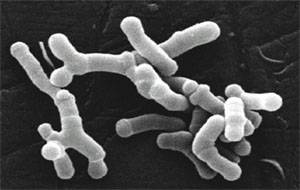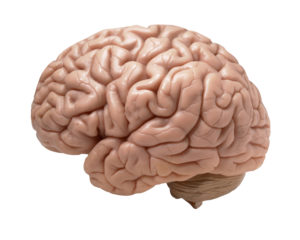 For years stores and manufacturers have promoted the advantages of Scotchgard and Teflon nonstick coatings for pots and pans, as stain-proofing for upholstered furniture and rugs, as a water repellent for clothing, for consumer goods such as dental floss, and for grease-proof food wrappers and containers. And yes, people have been convinced - with most cookware sold today being of the nonstick type, and the popularity of sofas and rugs coated with non-stain coatings. But once again, chemicals come with a price and health effects, and unfortunately these particular chemicals are found in all of us in varying levels.
For years stores and manufacturers have promoted the advantages of Scotchgard and Teflon nonstick coatings for pots and pans, as stain-proofing for upholstered furniture and rugs, as a water repellent for clothing, for consumer goods such as dental floss, and for grease-proof food wrappers and containers. And yes, people have been convinced - with most cookware sold today being of the nonstick type, and the popularity of sofas and rugs coated with non-stain coatings. But once again, chemicals come with a price and health effects, and unfortunately these particular chemicals are found in all of us in varying levels.
Polyfluorinated chemicals (PFCs) are a class of chemicals that are stain, water, and grease repellent chemicals.They have been found in the blood of more than 98% of the United States population. PFCs stay in the environment and body for many years (thus labeled as "persistent"). Some PFCs: perfluorooctanoic acid, or PFOA, perfluorooctane sulfonate or PFOS, perfluorononanoic acid or PFNA, and perfluorohexane sulfonate or PFHxS.
PFOA was used to make DuPont's popular Teflon coating for decades. DuPont phased out its PFOA production after a settlement with federal regulators (it was linked it to birth defects and cancer in animals). But meanwhile PFOA spread worldwide, and traces of the compound have been found in most people, in polar bears in the Arctic, in some drinking water, and even in some fish. PFCs pass from mothers to their babies during pregnancy, and in breast milk after birth. They are considered hazardous even in small doses, they accumulate, and have been linked to all sorts of medical problems, from developmental delays in the fetus and child, to immune problems, kidney disease, kidney and testicular cancers, and to thyroid disease.
And once again, as some chemicals are phased out, the replacement chemicals may be just as bad. One group of replacement chemicals is perfluoroalkyl sulfonate (PFAS). Experts worry that this new group of PFASs has many of the same troubling characteristics as their predecessors, because of the chemical similarities with the original chemicals. But we won't know for years, because once again the necessary health tests have not been done.
What can you do to avoid PFCs? 1) Do not use Teflon or non-stick pots, pans, and utensils. Use stainless steel or cast iron instead. 2) Avoid Scotchgard or other stain-proofing or stain-resistant treatments on upholstered furniture or rugs. 3) Avoid jackets, rain gear, or other clothing with "water resistant" or "stain resistant" treatments. 4) Try to cut back on foods that come in "grease-proof" containers. Don't use microwave popcorn bags. 5) Don't use dental floss such as Oral-B Glide dental floss (uses PFC), and use unwaxed or natural wax floss instead (such as Toms of Maine floss). 6) Avoid personal care products that contain ingredients that include the words “fluoro” or “perfluoro.
From Medscape: Prenatal Exposure to Household Chemicals Hurts Kids' Cognition
Exposure to common household chemicals such as those found in nonstick cooking pans, upholstery, carpet pads, and electronics during pregnancy may lead to poorer cognitive and behavioral development during childhood, new research shows.
In an analysis of more than 250 mother-child pairs, maternal exposure to polybrominated diphenyl ethers (PBDEs) and perfluoroalkyl substances (PFASs) was associated with impairments in executive function in children aged 5 and 8 years. "These findings suggest that concentrations of maternal serum PBDEs and PFASs during pregnancy may be associated with poorer executive function in school-age children," the investigators, with first author Ann Vuong, DrPH,...."Given that the persistence of PBDEs and PFASs has resulted in detectable serum concentrations worldwide, the observed deficits in executive function may have a large impact at the population level," they add.
In-unit increases in PFOS levels were associated with worse behavior regulation, poorer metacognition, and poorer global executive functioning. No link was found between PFOA levels and executive function. Dr Vuong told Medscape Medical News that although the majority of PBDEs and PFASs have been phased out of products, there is an ongoing risk of exposure."It's in the environment, and probably it's that people have already purchased products within their homes, and everyone has [PBDEs] in their bodies. So the only way to reduce the body burden or exposure is through cleaning methods," she said.
For PBDEs, it is recommended that people regularly use a high-efficiency particulate air (HEPA) filter in their vacuum and that they wipe down surfaces and regularly wash their hands. "For PFASs, it's recommended that you try not to, or limit your use of, microwaved fast food packaging, as well as trying not to use deteriorated pans with nonstick coatings," Dr Vuong added....Although reducing exposure to substances with known neurodevelopmental and cognitive risks is important, Dr Vuong emphasized that the chemicals have been replaced by novel compounds, some of which may carry their own risks.
UPDATE: 2 new articles discussing this issue: New Teflon Toxin Causes Cancer in Lab Animals and How Dupont Concealed the Dangers of the New Teflon Toxin
 The possibility of giving microbes in the future (whether bacteria, viruses, or fungi) to treat cancer is amazing. Of course big pharma is pursuing this line of research, which is called immunotherapy (stimulating the body's ability to fight tumors). The Bloomberg Business article discusses a number of big pharma companies entering the field and their main focus. The study in the journal Science finding that giving common beneficial bacteria (Bifidobacterium breve and Bifidobacterium longum) to mice to slow down melanoma tumor growth is a first step. The researchers themselves said that the 2 common beneficial bacteria species exhibited anti-tumor activity in the mice and was as effective as an immunotherapy in controlling the growth of skin cancer. But note that the bacteria needed to be live. Stay tuned....
The possibility of giving microbes in the future (whether bacteria, viruses, or fungi) to treat cancer is amazing. Of course big pharma is pursuing this line of research, which is called immunotherapy (stimulating the body's ability to fight tumors). The Bloomberg Business article discusses a number of big pharma companies entering the field and their main focus. The study in the journal Science finding that giving common beneficial bacteria (Bifidobacterium breve and Bifidobacterium longum) to mice to slow down melanoma tumor growth is a first step. The researchers themselves said that the 2 common beneficial bacteria species exhibited anti-tumor activity in the mice and was as effective as an immunotherapy in controlling the growth of skin cancer. But note that the bacteria needed to be live. Stay tuned....
 Makes sense that not driving to work in a car, but using mass transit (public transport), cycling, or walking to work results in lower body mass index (BMI) and body fat. They're moving more! From Science Daily:
Makes sense that not driving to work in a car, but using mass transit (public transport), cycling, or walking to work results in lower body mass index (BMI) and body fat. They're moving more! From Science Daily: A thought-provoking
A thought-provoking  Another study showing that higher physical activity (from a variety of activities) is "related to larger gray matter volume in the elderly, regardless of cognitive status", specifically in gray matter areas of the brain responsible for memory, learning, and cognition. In other words, higher levels of physical activity reduce brain atrophy that occurs with aging and improves cognitive function in elderly individuals. There is also discussion of higher activity levels improving cerebral (brain) blood flow. Bottom line: get off your butt and move more for better brain health. From Medical Xpress:
Another study showing that higher physical activity (from a variety of activities) is "related to larger gray matter volume in the elderly, regardless of cognitive status", specifically in gray matter areas of the brain responsible for memory, learning, and cognition. In other words, higher levels of physical activity reduce brain atrophy that occurs with aging and improves cognitive function in elderly individuals. There is also discussion of higher activity levels improving cerebral (brain) blood flow. Bottom line: get off your butt and move more for better brain health. From Medical Xpress: Not good news. More than half of Americans’ calories come from “ultra-processed foods,” according to
Not good news. More than half of Americans’ calories come from “ultra-processed foods,” according to  Yes, the chemicals in personal care products and cosmetics you use absolutely get into your body, have effects, and can be measured in the urine. Of especially big concern are the endocrine (hormone) disrupting chemicals such as phthalates, parabens, triclosan, and oxybenzone (BP-3). This study shows that even taking a 3 day break from these chemicals lowers their levels in your body. The researchers found that : "The adolescent girls in this study experienced an average within girl decline of 27-45% in urinary concentrations of certain phthalates, certain parabens, triclosan, and oxybenzone after three days of abstaining from conventional personal care products and using replacement products with labels indicating they did not contain these chemicals."
Yes, the chemicals in personal care products and cosmetics you use absolutely get into your body, have effects, and can be measured in the urine. Of especially big concern are the endocrine (hormone) disrupting chemicals such as phthalates, parabens, triclosan, and oxybenzone (BP-3). This study shows that even taking a 3 day break from these chemicals lowers their levels in your body. The researchers found that : "The adolescent girls in this study experienced an average within girl decline of 27-45% in urinary concentrations of certain phthalates, certain parabens, triclosan, and oxybenzone after three days of abstaining from conventional personal care products and using replacement products with labels indicating they did not contain these chemicals." Two recent studies link low vitamin D levels with more aggressive cancers: aggressive prostate cancer in men and more aggressive breast cancers (in mice and women). Researchers generally advise people to take 1000 to 2000 international units per day of vitamin D3 to maintain normal blood levels of of more than 30 nanograms/milliliter. The best source of vitamin D is sunlight, which is why vitamin D is frequently called the sunshine vitamin.
Two recent studies link low vitamin D levels with more aggressive cancers: aggressive prostate cancer in men and more aggressive breast cancers (in mice and women). Researchers generally advise people to take 1000 to 2000 international units per day of vitamin D3 to maintain normal blood levels of of more than 30 nanograms/milliliter. The best source of vitamin D is sunlight, which is why vitamin D is frequently called the sunshine vitamin. For years stores and manufacturers have promoted the advantages of Scotchgard and Teflon nonstick coatings for pots and pans, as stain-proofing for upholstered furniture and rugs, as a water repellent for clothing, for consumer goods such as dental floss, and for grease-proof food wrappers and containers. And yes, people have been convinced - with most cookware sold today being of the nonstick type, and the popularity of sofas and rugs coated with non-stain coatings. But once again, chemicals come with a price and health effects, and unfortunately these particular chemicals are found in all of us in varying levels.
For years stores and manufacturers have promoted the advantages of Scotchgard and Teflon nonstick coatings for pots and pans, as stain-proofing for upholstered furniture and rugs, as a water repellent for clothing, for consumer goods such as dental floss, and for grease-proof food wrappers and containers. And yes, people have been convinced - with most cookware sold today being of the nonstick type, and the popularity of sofas and rugs coated with non-stain coatings. But once again, chemicals come with a price and health effects, and unfortunately these particular chemicals are found in all of us in varying levels.